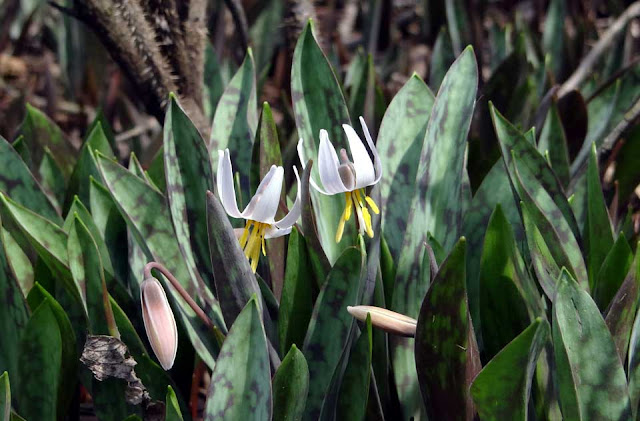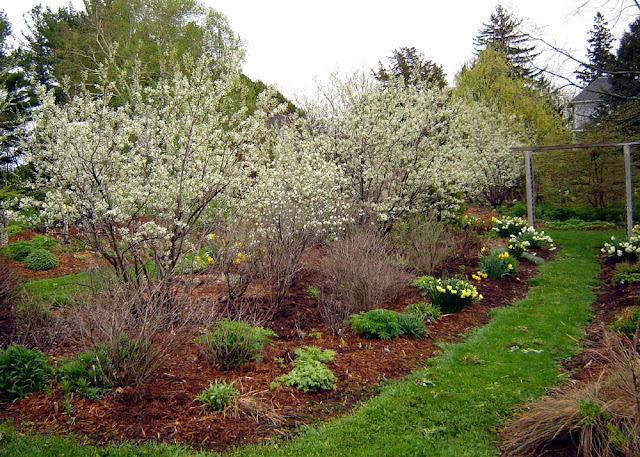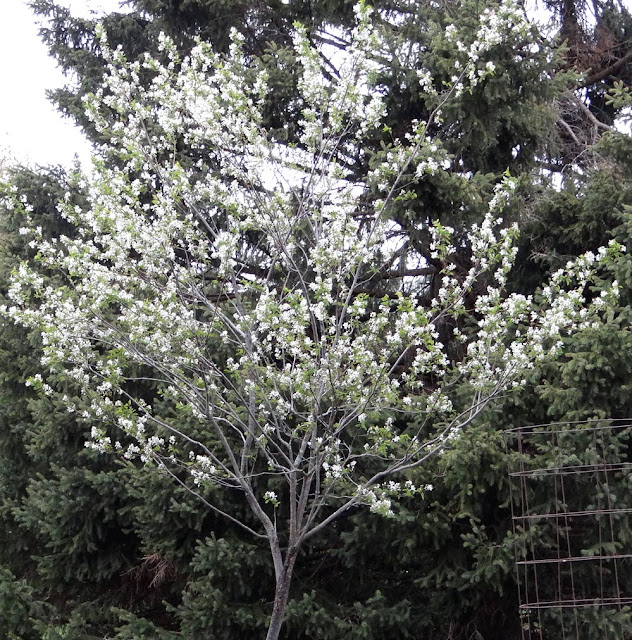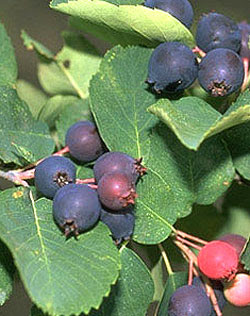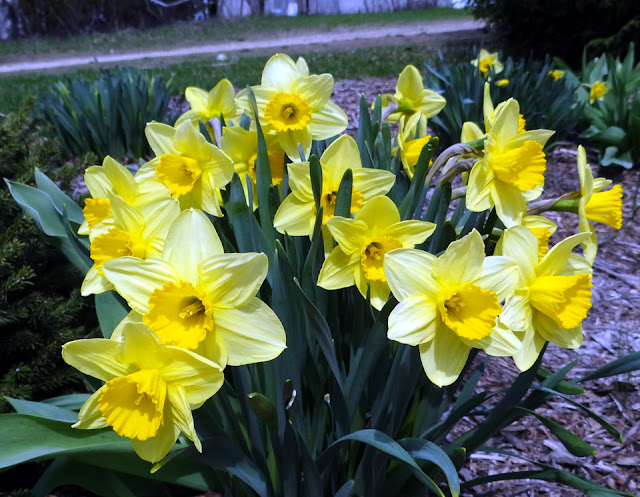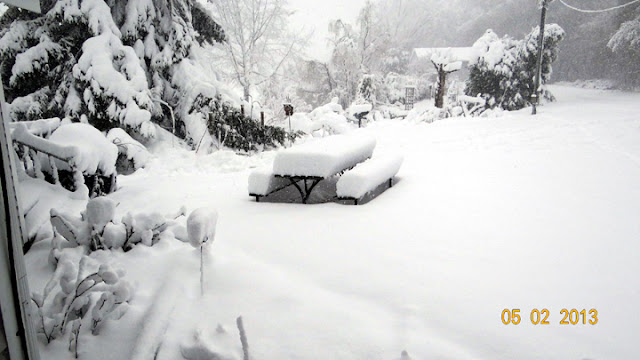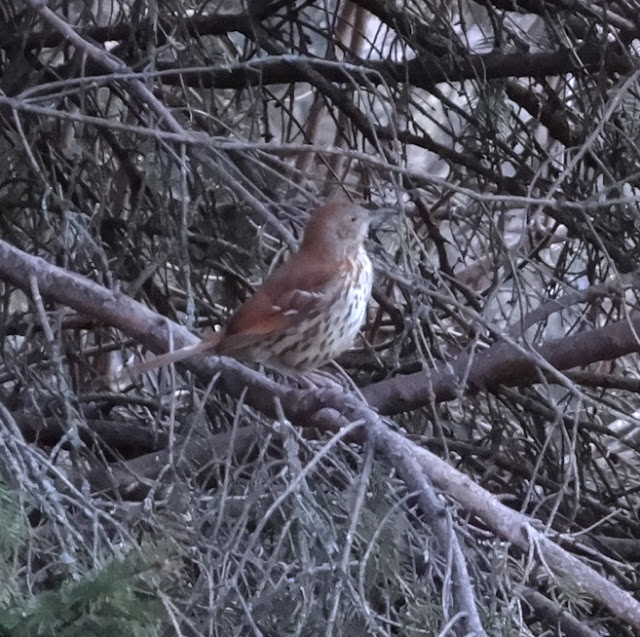 |
Harlow Carr a beautiful new rose!
Photo courtesy of David Austin Roses
|
It's only 8 degrees above zero this morning, so we're dreaming of spring!
And there's nothing better than seeing colorful photos of beautiful roses to help brighten a cold winter day. So, here's a highlight of the new roses we're offering this year.
New English Roses
We've grown the lovely English roses for years and are so excited to offer some of the best to our customers this year. English roses are developed by David Austin and have the best characteristics of Old Garden roses, along with all features we really want in roses today: repeat bloom, fragrance, hardiness and healthy foliage.
Until recently, most of the English roses weren't hardy enough to get through our supercold winters here in Wisconsin. But, David Austin and his team put alot of work into developing "gardener friendly" roses that are much hardier and easy to grow. And, lucky us, that included some yellow-blooming varieties!
So, here are the new English roses we're offering this year.
Charlotte
Charlotte is one of the most beautiful of the English Roses and one of the most winter hardy! Did we mention that it's also wonderfully fragrant? Oh, and it repeat blooms all summer, too!
 |
Charlotte Rose, photo courtesy of David Austin Roses
|
Charlotte is also "gardener friendly" in that it's very easy to grow. It has healthy foliage and is very winter hardy. It grows well in the cold regions of
Zone 4 with minimal cane dieback. All you have to do is prune the canes back to green growth in the spring and get ready for a summer of blossoms. If you live in the nothern part of Zone 4 or up in to Zone 3, be sure to cover the crown in the fall with a layer of mulch up to about 6-inches to protect the plant from really cold temperatures.
Charlotte was named after David Austin's granddaughter. So, you know it's a great rose to be worthy of that name!
Charlotte has compact, bushy growth to about 4-feet tall and 3-feet wide. Plant size will be smaller in colder climates. This is a great choice for a hardy, yellow-blooming shrub rose.
 |
Charlotte Rose, photo courtesy of David Austin Roses
|
If you're interested in ordering this rose, it's available to
order online on our Web site.
Crown Princess Margareta
Crown Princess Margareta has beautiful and wonderfully fragrant blossoms in a lovely apricot color. The blossoms appear in clusters all summer long, since it repeat-blooms 'til frost.
 |
Crown Princess Margareta, photo courtesy of David Austin Roses
|
Over the years, we've had so many customers ask us for a climbing rose that has yellowish, fragrant blossoms. We told them they had to move to a warmer climate or be prepared to do some major work to protect the plant from the cold. Well, this rose is pretty close to what we've been looking for!
Crown Princess Margareta has tall, arching growth, that makes it suitable for a low climber for those who are looking for that elusive winter-hardy yellow-blossomed climbing rose! This rose grows to about 5-feet tall and 4-feet wide. So, the tall canes can be attached to a trellis or pillar where you can "train" it to grow up the support.
 |
Crown Princess Margareta, photo courtesy of David Austin Roses
|
Crown Princess Margareta is also very healthy and hardy, and thrives in a range of climates and growing conditions. It is winter hardy to Zone 4 with minimal cane dieback -- just prune in the spring and it quickly regrows to bloom all summer
This rose was named after Crow Princess Margareta of Sweden, who was the granddaughter of Queen Victoria. She was also an avid landscape gardener and loved roses.
The Crown Princess Margareta rose is a great choice for those looking for a fragrant, apricot/yellow rose with taller growth. One of our new favorites!
If you're interested in ordering this rose, it's available to
order online on our Web site.
Harlow Carr
Harlow Carr is a beautiful and very fragrant rose that covers itself in pink blossoms all summer! It is noted as being one of the most free-flowering of all the English Roses.
 |
Harlow Carr, photo courtesy of David Austin Roses
|
To make this lovely rose even more wonderful, its healthy foliage and winter hardiness make it very "gardener friendly."
Harlow Carr is is winter hardy to Zone 4 with minimal cane dieback -- just prune back a little in the spring and get ready for a summer of blossoms. This rose blooms best when spent blossoms are removed (called "deadheading").
Harlow Carr has compact, mounded growth to about 4-feet tall and 3-feet wide. It's great for adding to your mixed border or as a low hedge.
 |
Harlow Carr, photo courtesy of David Austin Roses
|
This rose was named after the
Royal Horticultural Society garden in Yorkshire, UK.
The Harlow Carr rose is a great choice for a hardy, pink-blooming rose that has wonderful fragrance and the charm of an old garden rose.
If you're interested in ordering this rose, it's available to
order online on our Web site.
New Rugosa Rose
Marie Bugnet
Marie Bugnet is one of the first roses to bloom in the garden. The fragrant blossoms are a beautiful pure white that appear in clusters all summer. As you can see in the photo below, the buds have some pinkish-red color on the petal edges.
 |
Marie Bugnet Rose
|
Marie Bugnet is a Rugosa rose, but has lighter-colored leaves and not as deeply veined leaves as a typical Rugosa rose.
Marie Bugnet is the sister of another lovely rose,
Therese Bugnet, and has the same winter hardiness but is smaller in size.
This beautiful rose grows into a mounded shrub with light-green foliage with red canes that are attractive in the winter.
Marie Bugnet has healthy foliage and is completely winter hardy. Winter hardy
to Zone 3.
If you're interested in ordering this rose, it's available to
order online on our Web site.
We hope these colorful photos of roses gave you an enjoyable break from winter!


